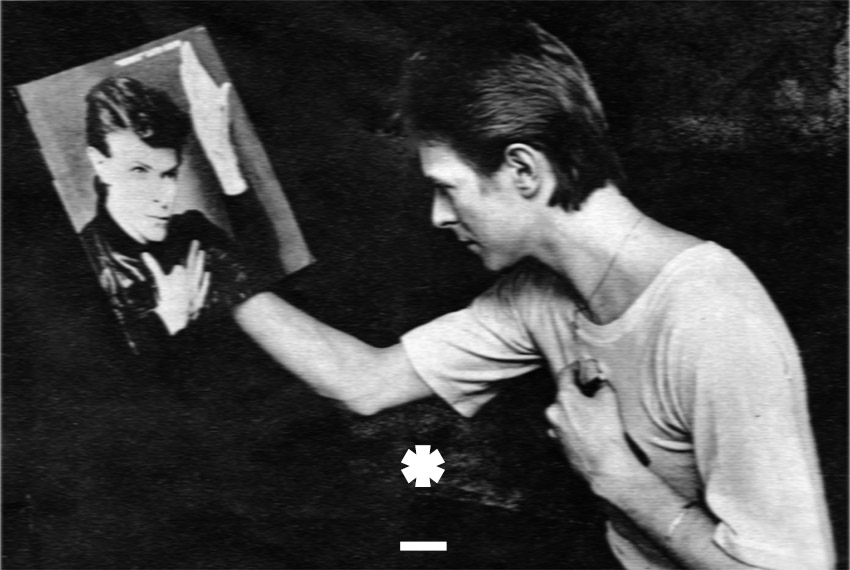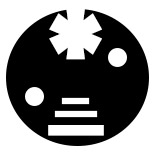1990-1999: Earthling
TIN MACHINE’S “YOU BELONG IN ROCK N’ ROLL” AT TOP OF THE POPS
If there’s one word that can symbolize David Bowie’s work in the ’90s it would be this: mid-tempo. Mid-tempo is not a bad word. Downtempo is worse, up-tempo would require him actually hitting a certain groove consistently…but like many of his contemporaries, it seemed rather than go down into the world of retread, he tried to keep up with the changing music scape around him. This settling into elder statesman of pop happens to the best of them: the Paul McCartneys, the Neil Youngs and the Stevie Wonders, and it seemed that David was now relishing a bit in retreating from the limelight of always having to be in front of the cavalry.
David Bowie with DnB icon @MRGOLDIE at a @metalheadzmusic party, where he was a regular attendee. R.I.P David Bowie. pic.twitter.com/7RnIA2ftNC
— Born & Bred Festival (@bornandbredLDN) January 11, 2016
It all began a year earlier with 1989’s Tin Machine. Joining forces with the infamous Sales Brothers and Reeves Gabrels, David Bowie tried to be just another person in the band. After all the gloss and artifice of the ’80s, it seemed that for the ’90s he was ready to introduce a certain edge back into his music. By the time he settled down for his first new release of the decade, 1993’s Black Tie White Noise, you could hear that his taste level had been growing again. Hearing albums like it, and others like the Buddha of Suburbia soundtrack, one could conceivably let them play through without looking much for that skip button. As dated as some of those trip-hop and early ’90s adult contemporary rock sounds are today, they were meaningful in a way previous releases weren’t.
DAVID BOWIE’S “I’M DERANGED” FROM OUTSIDE
Off the ’90s period albums one can fondly look back on, look no further than 1995’s Outside. Rekindling his creative relationship with Brian Eno, its loose concept of a dystopian future where governments force artists to commit mutilation to get around Art Crimes (something I’d wager no one should read too much into) allows them both to experiment with au courant Industrial music. What’s astounding is that now there are melodies that linger in your mind a bit more. Away from the shocking videos like “A Heart’s Filthy Lesson,” are video-less songs like “Outside” and “I’m Deranged” that are divorced from their time enough to be timeless.
zZ SAMPLER: DAVID BOWIE 1990-1999
Where Outside tried to experiment with current styles, it seemed that 1997’s Earthling and 1999’s Hours settled Bowie into a certain groove. It could be taking what was popular in the above-ground alternative world and rejiggering it, or it could be not quite having the chops (and melodies, if we’re being honest) to pull this kind of electronica-pop off. Taking out tracks like “Little Wonder” and “I’m Afraid of Americans” is easy, but the rest of the warmed over NIN-light album can grate. When Trent Reznor did a remix of “I’m Afraid of Americans” for “Showgirls,” it seemed like the snake trying to bite off its own tail.
DAVID BOWIE’S “SEVEN” FROM HOURS LIVE ON STAGE.
All of this makes the over-correction of Hours even more important. If you invested in Bowie Bonds in 1997, this would be what I think they call joining a conservative growth plan on futures. Definitely David Bowie appears in great spirits and image, but the songs seem too sedate for the man we’ve known before. If this was Bowie’s nostalgic album, we should expect something more than a mid-tempo take on what he can do. The most interesting thing is that the cutting edge came not from the album, but from its release, becoming the first album to be released on the internet (albeit at 1999 bandwidth speeds..) before its physical release. If we’re reaching for nostalgia, the best you can pull from this album are the cuts “Thursday’s Child” and “Seven,” but the rest are arguably left forgotten. This is what would make the next century so astounding: it was his final rebirth.




